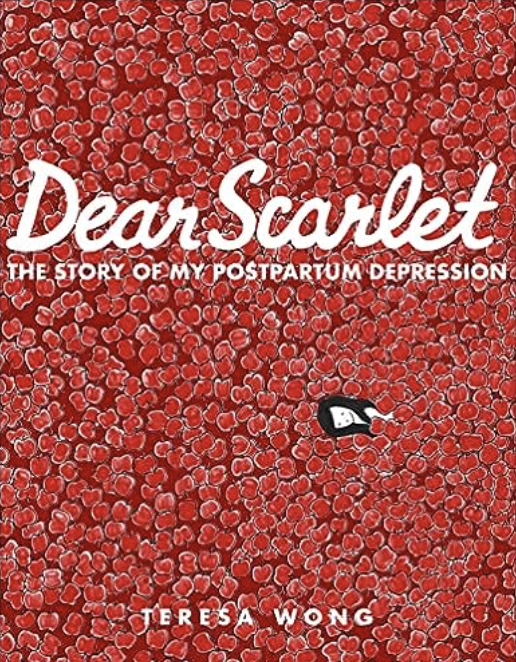
Teresa Wong, fellow Gotham teacher, did me the huge favor of dropping in on my memoir class recently to talk about her graphic memoir, Dear Scarlet, and the graphic memoir she’s working on now, All Our Ordinary Stories, which will come out next year.
And she said something about Dear Scarlet that really surprised me: “I am a little bit embarrassed at some of my drawings in my book.”
Why should this surprise me? Authors talk constantly about how they open their published books and find sentences, paragraphs, chapters they want to take another run at. Every writer I know can quote Leonardo Da Vinci: “Art is never finished, only abandoned.”
To me, a reader, Teresa’s book seemed as though it must be exactly what she intended: A heartfelt and moving story about her experience with post-partum depression.
But no story is ever what the writer first envisioned.
“The pictures in my head are much more beautiful and well rendered than the ones I can actually draw,” Teresa said. “That’s a creative phenomenon that everyone has. It’s always going to be better in your head.
“But then you have to realize that if it’s beautiful in your head, it doesn’t really mean anything. Because no one else can see it.”
And that’s the salient point. It’s wonderful, really, to love a story in your mind. To love the idea, or how it might move people, how it might sound, or look, or feel.
As long as you don’t get too hung up on that perfect story that doesn’t actually exist. Yet.
That’s a kind of perfectionism that’s especially self-defeating. Unchecked, it can feed a writer’s imposter syndrome, and paralyze you even further.
Author Athena Dixon, whose memoir The Loneliness Files is forthcoming this fall, has written and spoken extensively about imposter syndrome, and says that kind of perfectionism can warp your own perceptions of your work.
“Any small mistake makes [perfectionists] question their competence,” Dixon wrote in the anthology Getting to the Truth. But, if “you can give yourself credit for what you are doing well, it will make what you have to ‘fix’ less overwhelming.”
If you’re asking whether the version of the story you write (or the picture you draw) is as good as the one you envisioned, you’re asking the wrong questions.
“It’s better to ask, does it communicate? Does it reach people?” Teresa said. “As long as you communicate, you’re golden.”
If you do get that sinking feeling when you’re writing, that this story will never be what you’d hoped, remember that most likely, what you were picturing was a story that would move people. Other people. Who don’t live in your head. And for it to do that, you have to let go, let it out, and let it be what it’s going to be.
“To exist, it has to be a little bit flawed,” Teresa said. “But then at least it can be shared, right?”

Kelly Caldwell,
Dean of Faculty


